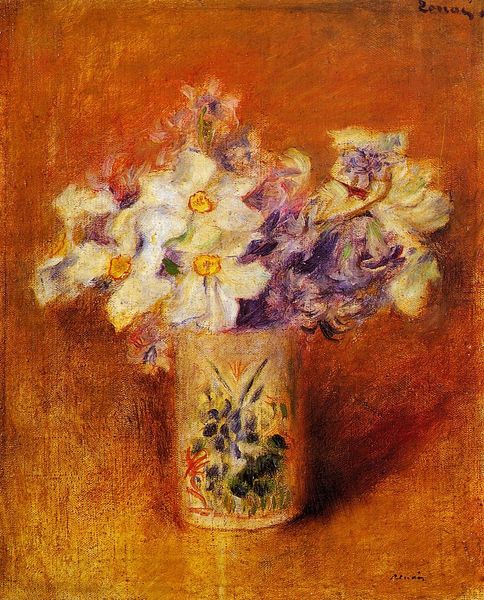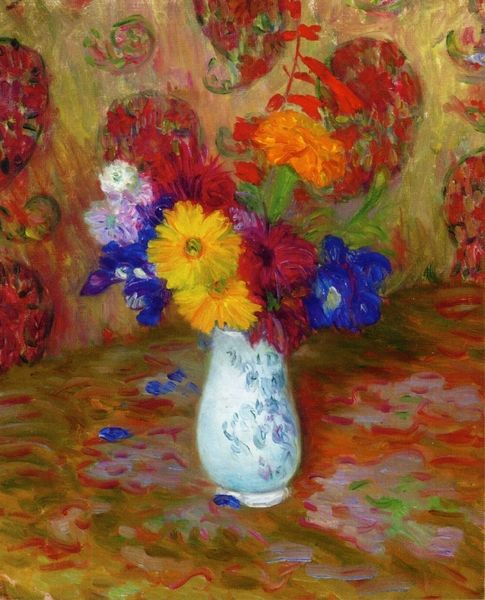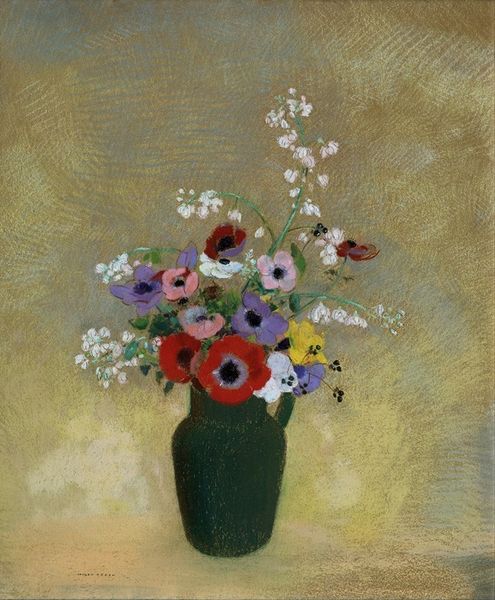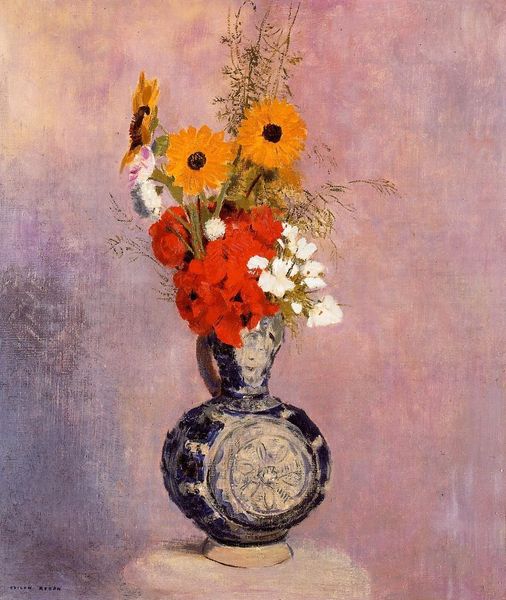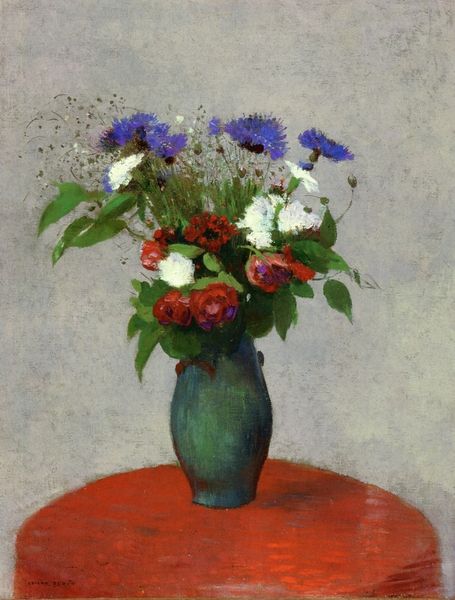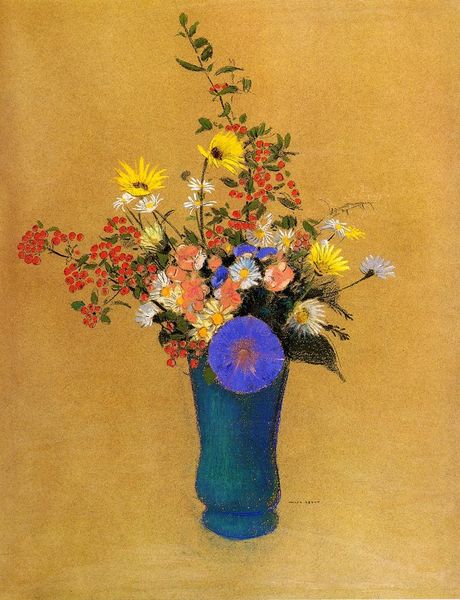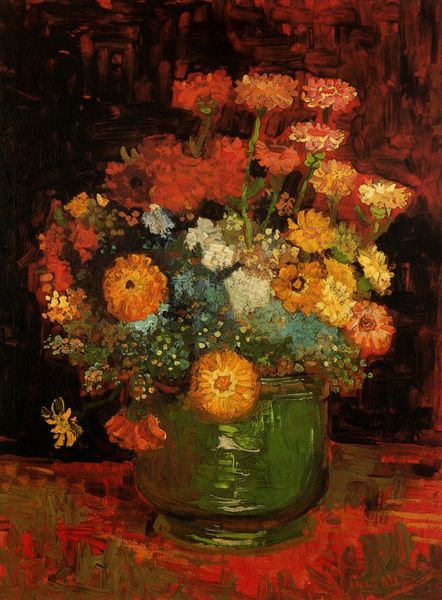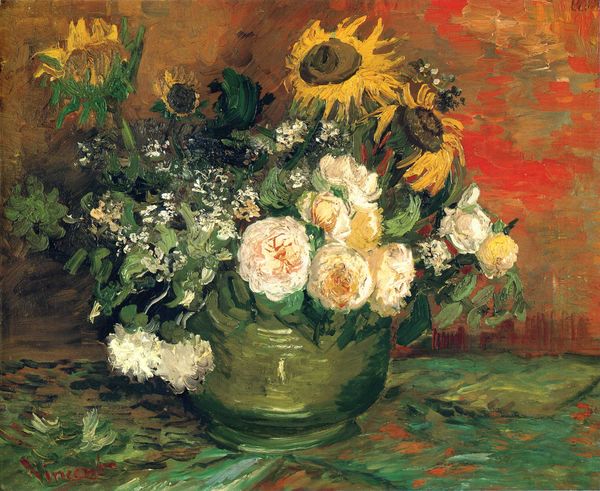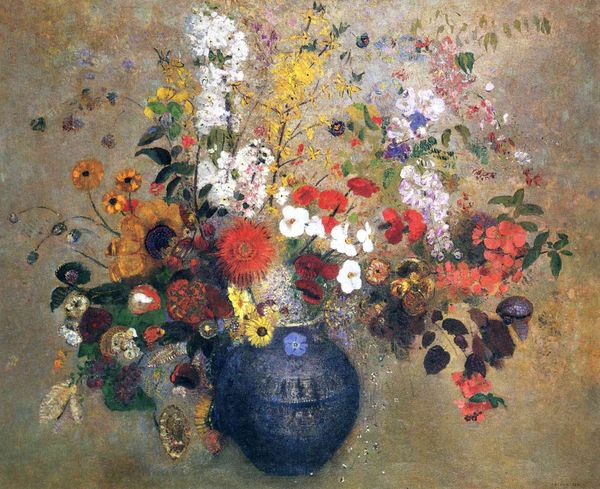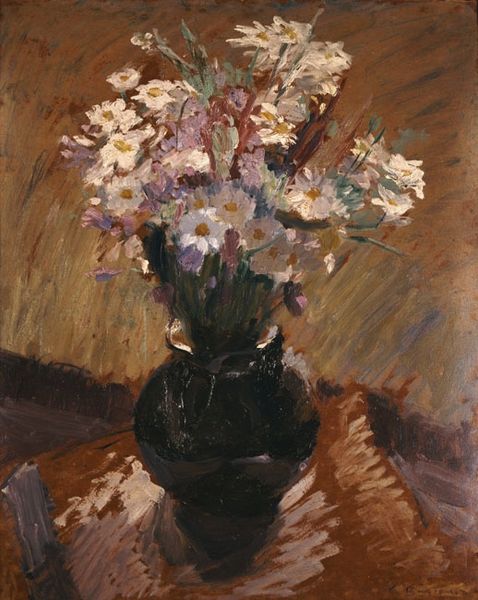
Vase with Lilacs, Daisies and Anemones 1887
0:00
0:00
vincentvangogh
Musée d'Art et d'Histoire, Geneva, Switzerland
Copyright: Public domain
Editor: This is Van Gogh’s "Vase with Lilacs, Daisies and Anemones," painted in 1887. The thick oil paint creates a palpable texture, and the colours are so vibrant, yet somehow melancholic. What do you see in this piece beyond just a simple still life? Curator: It's far from simple, isn't it? The flowers themselves—lilacs representing first love, daisies innocence, and anemones, forsaken love—it's a visual language heavy with unspoken feelings. Editor: So, you see this painting as a collection of coded symbols. Can you elaborate? Curator: Consider Van Gogh's mental state. The layering of these specific floral symbols paints a portrait of conflicting emotions. The vivid impasto acts almost like a physical manifestation of his inner turmoil. He juxtaposes flowers relating to love, joy, innocence and those flowers often associated with illness and death. How do these floral signifiers affect the viewer? Editor: I hadn’t thought about the arrangement of the flowers representing something deeper. So the vibrant colours might be a way of masking the difficult message in this work? Curator: Precisely. There’s an enduring quality about this combination, almost like Van Gogh wanted to use potent emblems to explore more intense themes than mere pretty decoration. It begs us to ask ourselves, "What symbols are we drawn to, and what do they reveal about our own emotional landscapes?" Editor: I see it differently now. Thank you for guiding me through these layered meanings! Curator: It's a conversation, isn't it? We interpret and re-interpret as our own understanding evolves, too.
Comments
No comments
Be the first to comment and join the conversation on the ultimate creative platform.
